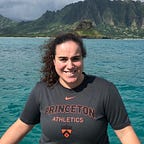My Pay-for-Play Model
The NCAA vote delay on name, image, and likeness (NIL) is attributable to potential violations of antitrust laws with the proposed rule. The new rule would give the NCAA sole audit power and to pick and choose third-party NIL platforms. The NCAA is also seeking an antitrust exemption to permanently solidify collegiate athletes as amateurs to use their monopolistic powers to further control athletes.
In my senior thesis at Princeton, I discussed a potential model that can be adopted to ensure student-athletes’ rights and protect the competitive market. My approach focused on the Bayh-Dole Act, which governs university faculty and researchers who use campus facilities to make discoveries and file for patents. This Act lets universities retain ownership of patents that result from federally, which serves as a motivator for schools to invest in faculty and facilities. I came across a professor from the University of Colorado, Dr. Roger Pielke, who advocated for adapting this Act to college athletics.
“Each campus would help athletes identify, negotiate and secure compensation for their name, image, and likeness rights. A formula would allocate the resulting revenue — perhaps one-third each to the athlete, the athletic department and the campus.” -Dr. Roger Pielke
The NCAA is currently focused on endorsement deals and third-party platforms, helping athletes monetize their personal brand. However, many states are also calling for profit sharing of ticket revenues. Athletes are a part of the university they attend and should be regarded as entities in the same way as professors. With pressure to include ticket revenue sharing, schools are ultimately paying student-athletes a salary as employees.
This is why I looked at how faculty receive outside funding for research completed at their university. Just as a professor represents a university and benefits from available resources, an athlete plays with a school’s name on their chest and has access to dedicated athletic resources. Athletes are an extension of the university, like other employees, and should be treated as such. Thus, universities and colleges should be responsible for protecting their student-athletes, leaving the NCAA to simply set standards and guidelines to ensure consistency and fairness in the negotiation and regulation of compensation deals.
I would probably divide endorsement earnings amongst the player, team, and athletic department, leaning more toward a 60–20–20 split. The athlete should get the majority share, but the team and athletic department should benefit from the investment of resources, time, and energy into developing players. Regardless of how the money is split, I believe that an adaptation of the Bayh-Dole Act would be most appropriate to apply to the NCAA pay-for-play model. This is a tried and true model governing university faculty and facilitation of research developments — much in the same way that athletic departments develop individual player’s products, or on-field performance. However, the most important piece to this puzzle is the protection of the rights of student-athletes. Whether a model like this is adopted or not, the priority must lie with ensuring legitimate and fair rights of the student-athlete to profit from their name, image, and likeness.
